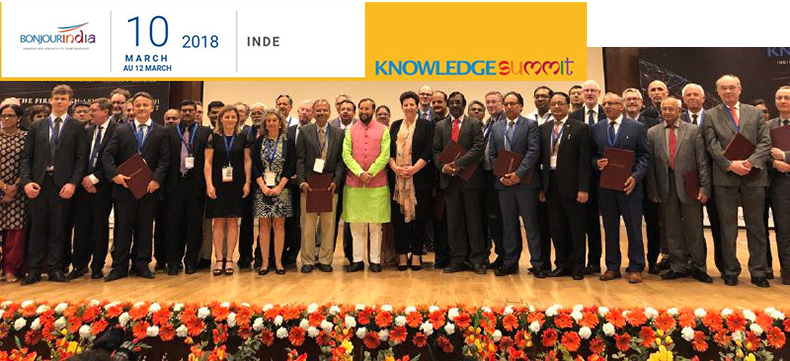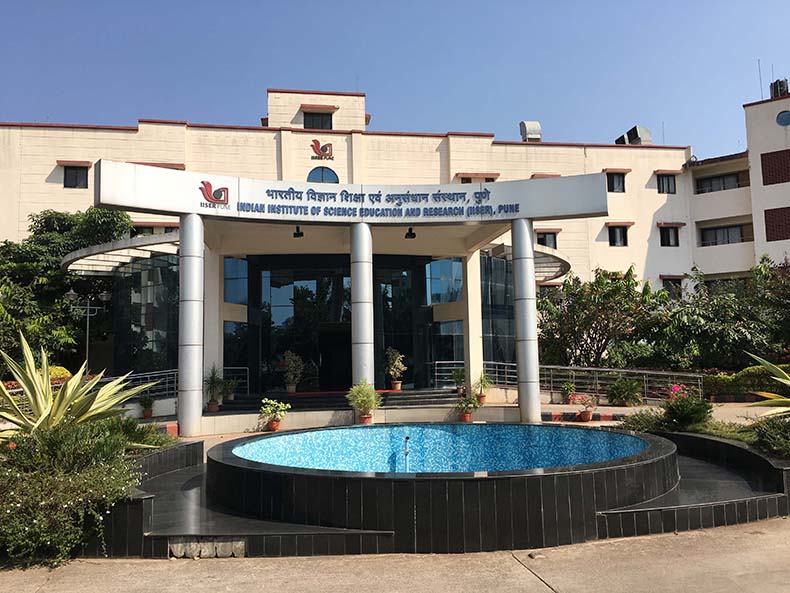Knowledge Summit 2018: cooperation with India renewed

French President Emmanuel Macron and French Minister of Higher Education and Research Frédérique Vidal attended the summit along with senior Indian government officials.
The talks were held to draw up the road map for cooperation between India and France for the next five years. The summit ended successfully with an agreement on mutual recognition of educational qualifications. A new Indo-French Fund for Education to encourage student mobility between India and France was also announced. President Macron reiterated his wish to double the number of Indian students coming to study in France over the next two years.
This mission was an opportunity for ENS Paris-Saclay to strengthen the collaboration with India initiated in 2005. An agreement was officially established for the Indo-French cooperation network instituted in 2016 between the écoles normales supérieures (ENS Lyon, ENS Paris-Saclay, ENS Rennes and ENS Paris) and the Indian Institutes of Science Education and Research (IISER), a group of leading and highly selective institutions in the science disciplines. The agreement follows the official visit of IISER directors from Kolkata, Mohali, Pune and Thiruvananthapuram to ENS Paris-Saclay and Université Paris-Saclay in June 2017.
The strategic partnership between the ENS group and the IISER network enables academic and scientific collaboration agreements to be established between India and France, in view of increasing student mobility, doctoral supervision and research projects. From the beginning, this networking initiative has received considerable support from French and Indian diplomatic networks.
Long-standing partnerships renewed
Since 2005, ENS Paris-Saclay has developed partnerships with several Indian higher education and research institutions. In order to pursue and strengthen this collaboration, ENS Paris-Saclay representatives visited several institutes, including the Indian Institutes of Technology (IIT) of Bombay and Kanpur—which share the disciplinary fields of engineering, science and social sciences with ENS Paris-Saclay—the Raman Research Institute, the Jawaharlal Nehru Centre for Advanced Scientific Research and the Indian Institute of Science (IISC) in Bangalore.
During the visit to India, a general agreement between the Indian Institute of Technology (IIT) Bombay and ENS Paris-Saclay in computer science, was signed, in connection with the Relax International Joint Unit (UMI) and the Chennai Mathematical Institute.
The higher education system in India
India has more than 800 institutions to its credit and has followed an ambitious higher education policy for some years now. In 2016-2017, the budget for higher education and research increased by 19 percent, particularly for university programmes, e-learning, financial aid for students and research support. There was also an 11.5 percent budget increase for independent agencies and institutions such as IITs (Indian Institutes of Technology), IIMs (Indian Institutes of Management), and IISERs (Indian Institutes of Science Education and Research). These institutions, comparable to France’s grandes écoles, are real success stories for the country. Like the écoles normales supérieures in France, they train the next generation of Indian decision-makers and experts with an increasingly international outlook, and award their own degrees.
Ramarani Sethy, an Indian PhD student from the Nara Institute of Science and Technology (NAIST) who is currently conducting research at ENS Paris-Saclay’s PPSM laboratory, trained at IISER Thiruvananthapuram (IISER-TVM), in the state of Kerala. “All the fundamental science subjects are taught in the first two years at IISER: mathematics, physics, chemistry and biology. These advanced courses helped me acquire the knowledge I needed to choose the right disciplines for the rest of my studies. During the programme, I did a number of research internships in the disciplines I chose, both chemistry and biology”.

Student mobility on the rise
With more than 30 million students (2,4 percent of the Indian population), India now has the third largest student population in the world behind the United States and China. In 2015, nearly 300,000 Indian students studied abroad. Although France ranks 10th among destinations for Indian students, with a little under 5,000 students hosted in 2017, Indian student mobility to France increased by more than 50 percent between 2009 and 2014. The Ministry for Europe and Foreign Affairs has set the ambitious goal of hosting 10,000 Indian students in France by 2020.
ENS Paris-Saclay welcomes students from India every year for courses such as the Erasmus Mundus Master’s programme Monabiphot in the innovative field of molecular photonics for telecommunications and biology. Indeed, it was by hosting students from the IISERs of Kolkata, Mohali and Bhopal for research internships and PhD research, as well as Indian academics, that our collaboration with these institutes began.
Photo credits: Ministry of Higher Education / ENS Paris-Saclay
